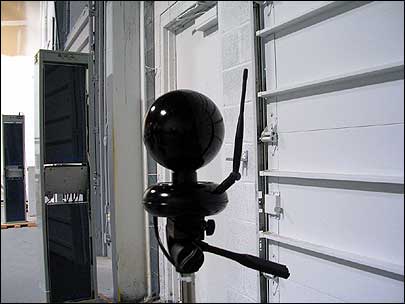r
Feb. 28, 2006—Reston, Va.-based systems integrator ODIN Technologies has announced a product utilizing a specialized RF radiation monitor and interrogator (reader) configuration software to help end users establish banks of readers within a single facility. “One of the toughest parts of larger RFID deployments is working with readers in close proximity to one another,” says Patrick Sweeney, president and CEO of ODIN Technologies. Because companies will soon begin using upwards of 10 or 15 interrogators within a single facility as they scale up their RFID systems, he says, reader interference is likely to become a growing problem. The Easy Reader software, designed to support EPC Gen 2 UHF interrogators, presently supports only Symbol Technology‘s Gen 2 interrogators operating according to regulations established by the U.S. Federal Communications Commission (FCC).
When multiple readers operate near one another, their performance is downgraded when they create excessive RF noise called cross talk by transmitting signals at the same time. Users also run the risk of having multiple readers sense the same tag as it enters an interrogation zone they both share. To rectify these problems, and to keep specific channels used for reading UHF tags clear of excess traffic, EPCglobal established a dense-reader mode protocol for its Gen 2 air-interface protocol. However, because dense reader mode is an option of the protocol rather than a requirement, not all Gen 2 interrogators support it. And even if readers operate in dense-reader mode, other configuration settings also factor into whether they will suffer from degraded performance due to RF interference.

Easy Reader addresses these problems by generating a list of interrogator configurations and antenna placements for optimal reader operation. In building the software, ODIN relied on learning it gained from RFID tag and reader benchmark tests it had previously carried out, as well as findings from systems integration work it has done.
The Easy Reader product includes the software, preloaded on a laptop computer, and the ODIN Portal Probe, a tripod-mounted device with a spinning sphere roughly the size of a softball, that measures the RF radiation generated within an interrogation zone. To deploy the product, users start by importing a floor plan of their workspace—the area in which they will be setting up the reader—into the program. Using a drop-down menu, they select each interrogator and antenna to be deployed, assigning each its own network IP address. The laptop then displays icons for the hardware devices, which the user drags and drops onto the floor plan to represent where they have been installed. After configuring the software in this manner, the user places the Portal Probe inside each reader’s interrogation zone.
The probe takes information from each antenna and sends it wirelessly to the Easy Reader software, which runs the data through its algorithms. Once all interrogation zones have been tested, the software generates a list of optimal configuration settings and antenna placements. These settings are then used to establish the interrogation schedule—when each reader will scan for tags—and the power level each interrogator should be set at, as well as to show the user how far each reader’s interrogation boundaries extend.
“One of the biggest complaints we hear from end users is that RFID is too complex when you deploy multiple readers, because of problems such as cross talk. People blame the readers, but the readers actually work great if you know what settings you need to use,” says Sweeney. “We’ve based Easy Reader on software that we’ve been using internally for our systems integration work. It used to take us a full day to set up a bank of readers, but with this [Easy Readersystem], it takes a fraction of that.”
Easy Reader is available now, though the company has not yet released pricing information. Sweeney says ODIN expects to add support for other manufacturers’ Gen 2 readers in the near future. By summer, it will also include support for RFID systems for use in other regulatory jurisdications, including the European Telecommunications Standards Institute (ETSI), which stipulates that RFID devices in Europe operate only in the 865.6 to 867.6 MHz UHF channels.

